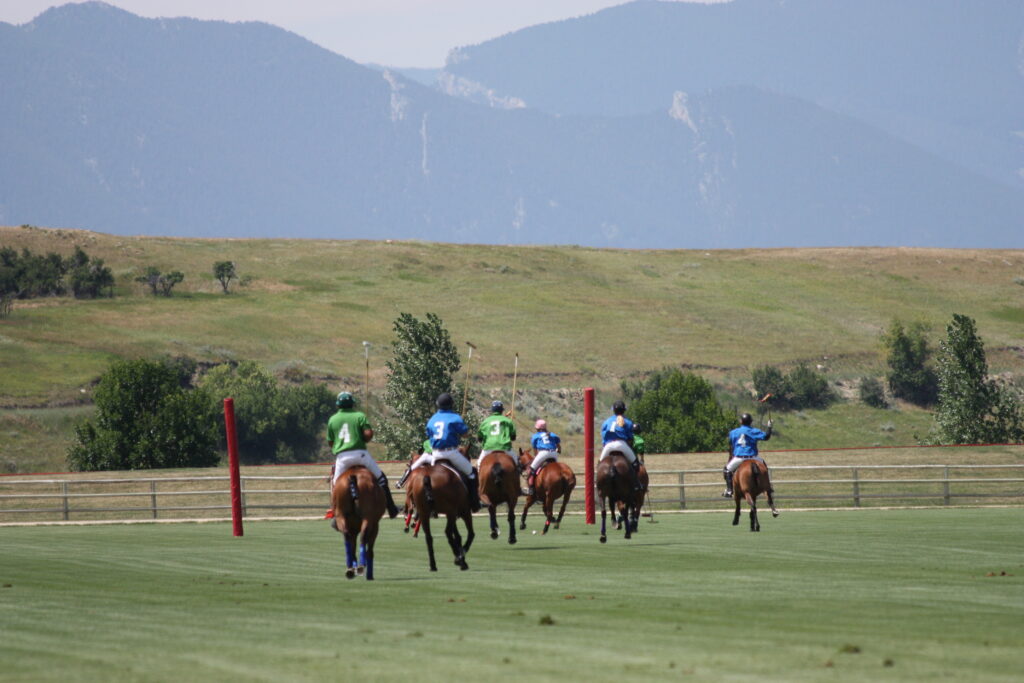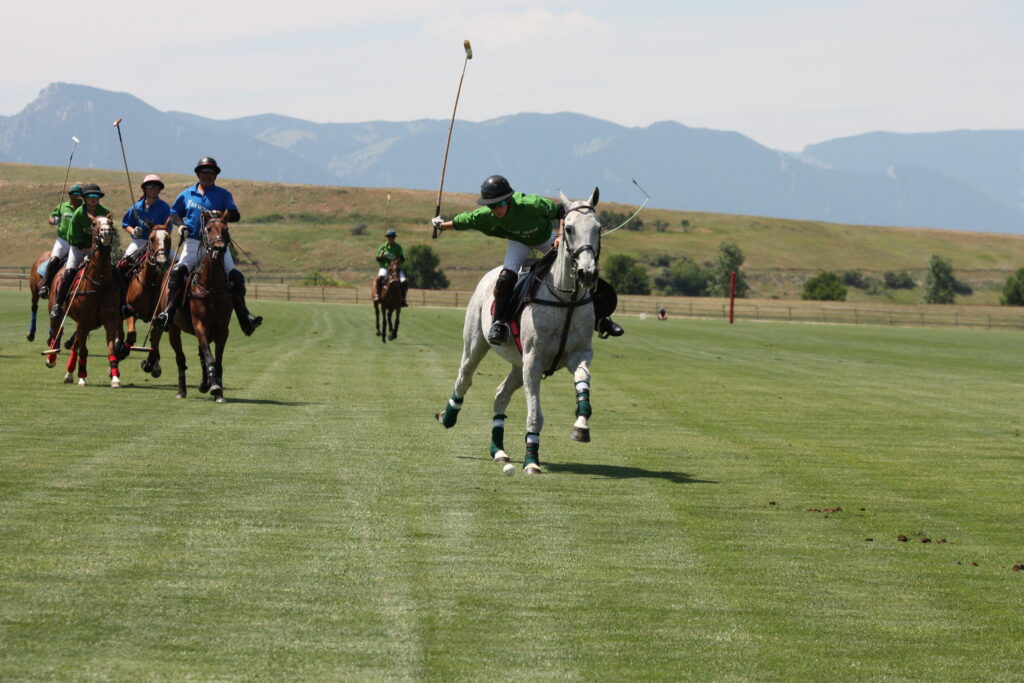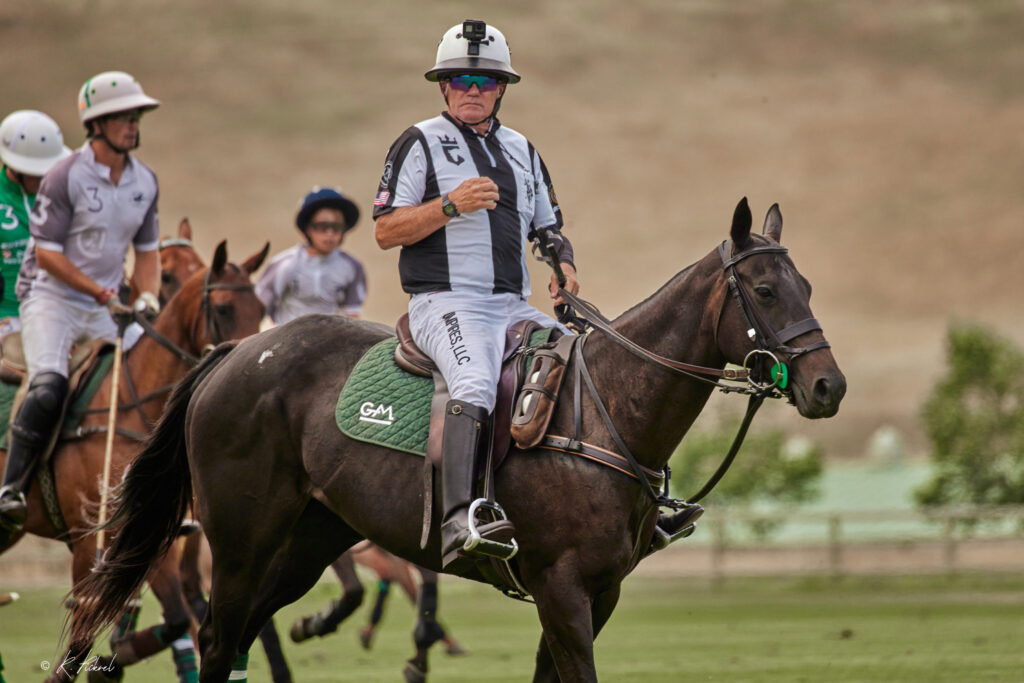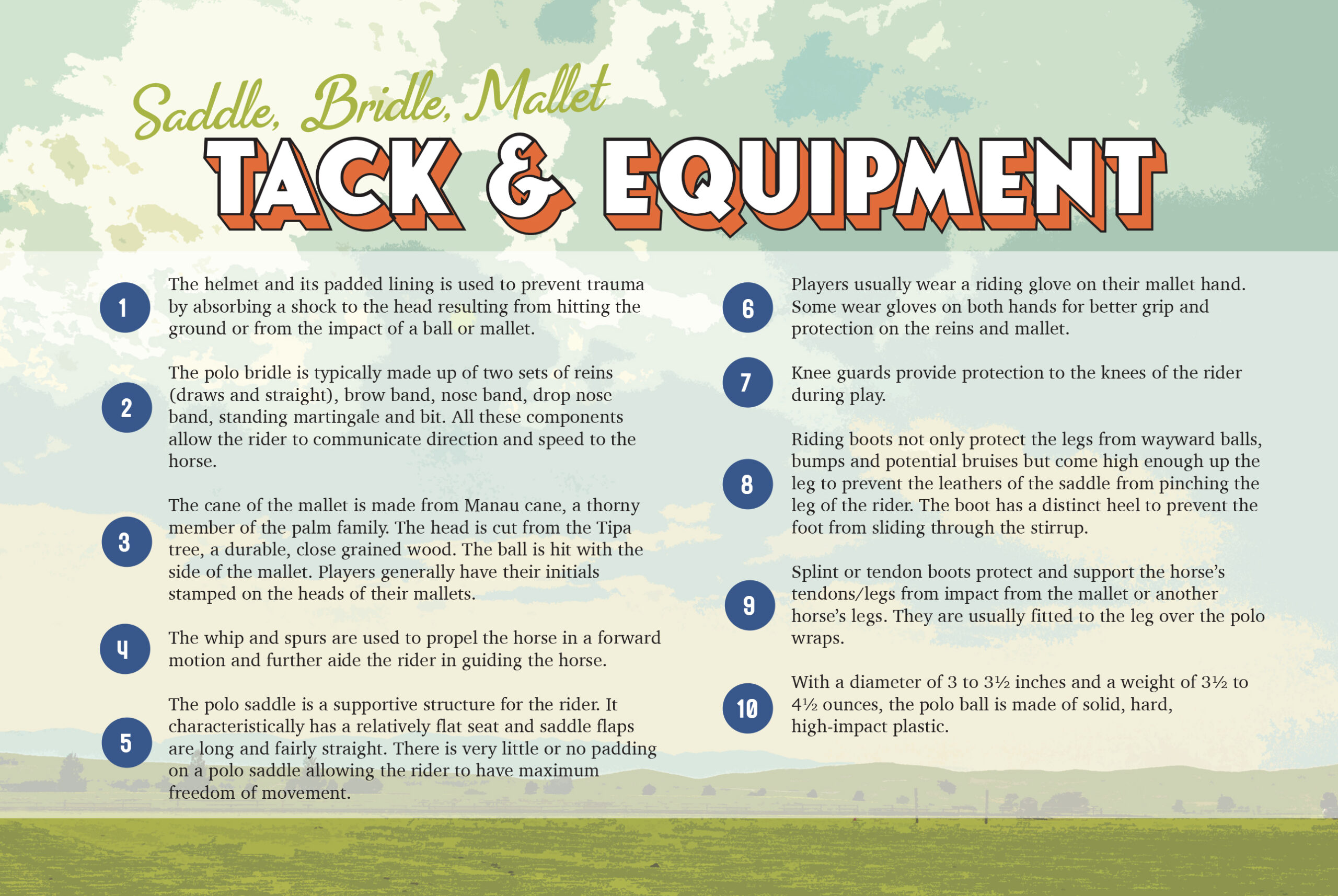
Learning the Rules of Polo

1. Each of the 4 players on a team wears a jersey with the number 1, 2, 3 or 4 on his/her back. Each number corresponds to their assigned position. Polo is a team sport, with each of the 4 team members playing a specific position, yet supporting the entire team in both offense and defense.

2. Similar to the dotted line on the freeway, players must stay on their side of the line unless no one is in the other lane. The line of the ball is created once the ball is struck and does not change until it is struck again, sending the ball in a different direction. The line of the ball is used in many ways, most importantly to act as an imaginary buffer to avoid collisions when two or more players ride to the ball. Players must hit the ball on their side of the line and may not cross the line of the ball. Doing so would cause a hazardous situation.

3. At the start of a game, the umpire bowls the ball by hand firmly between the line-up of the two teams.

4. Teams change direction in which they are playing after each goal is scored and/or after each chukker. Switching sides allows each team an opportunity to start with the ball being bowled in on their right-hand-side. Changing direction keeps any team from having a wind, sun or field advantage.

5. All players must play right-handed.

7. Penalties and/or injuries may stop play. Play is continuous until the whistle is blown. Rules in polo are first to protect the safety of the horses. (Time outs and substitutions are allowed)

8. A player may “ride-off” his opponent in order to spoil his shot. The angle of the collision or bump must be slight and pose no serious danger to rider or horse. Similar to checking in hockey.

9. All players on the field are able to score goals.

10. There are degrees of dangerous and unfair play and penalty shots are awarded depending on the severity of the foul and where the foul was committed on the field.

11. A hook is when a player interferes with the defending player interferes with the hitter’s swing. It is a foul to hook above the opponent’s shoulder or across their horse.

12. Ponies are typically switched out at the end of each chukker.


